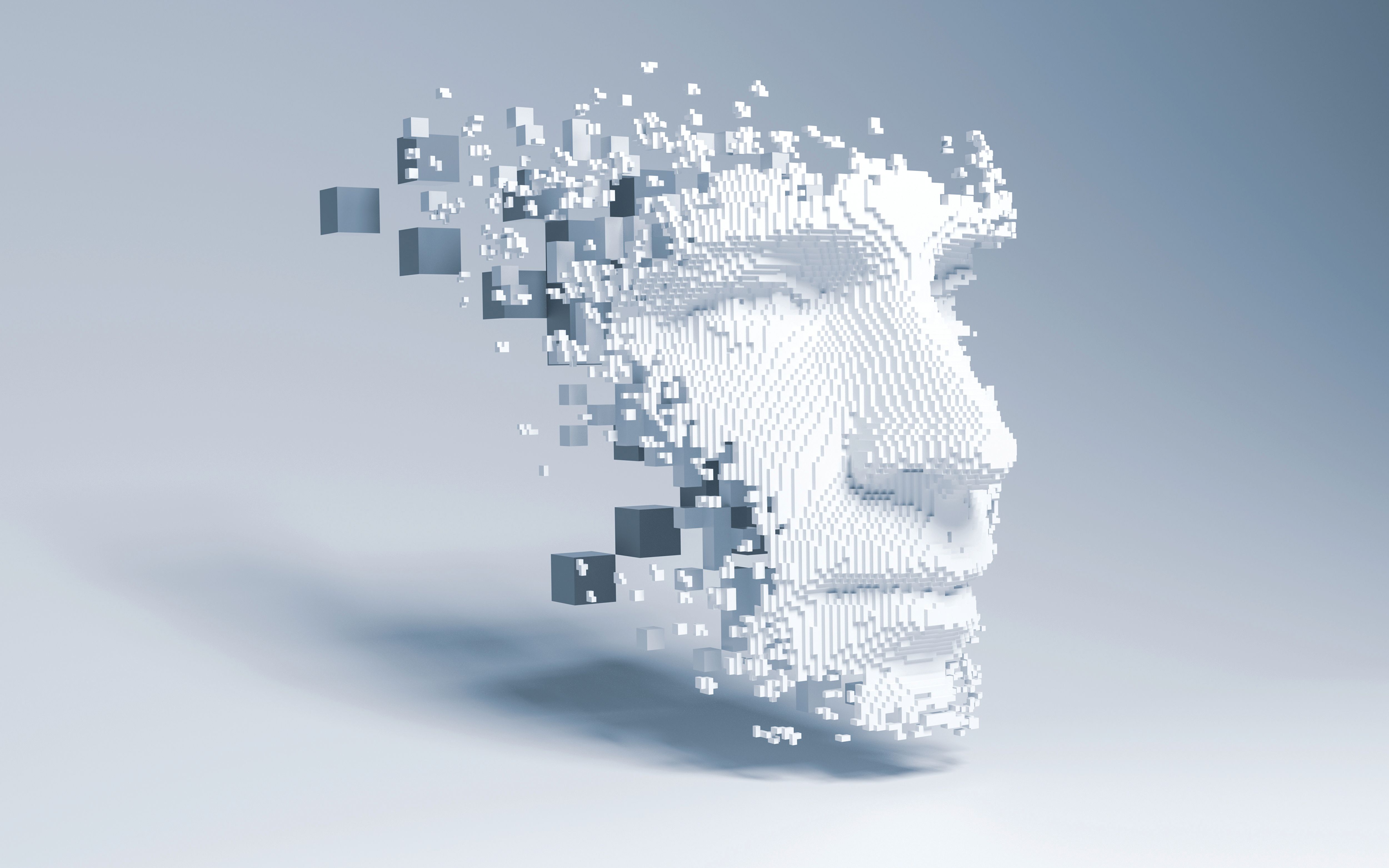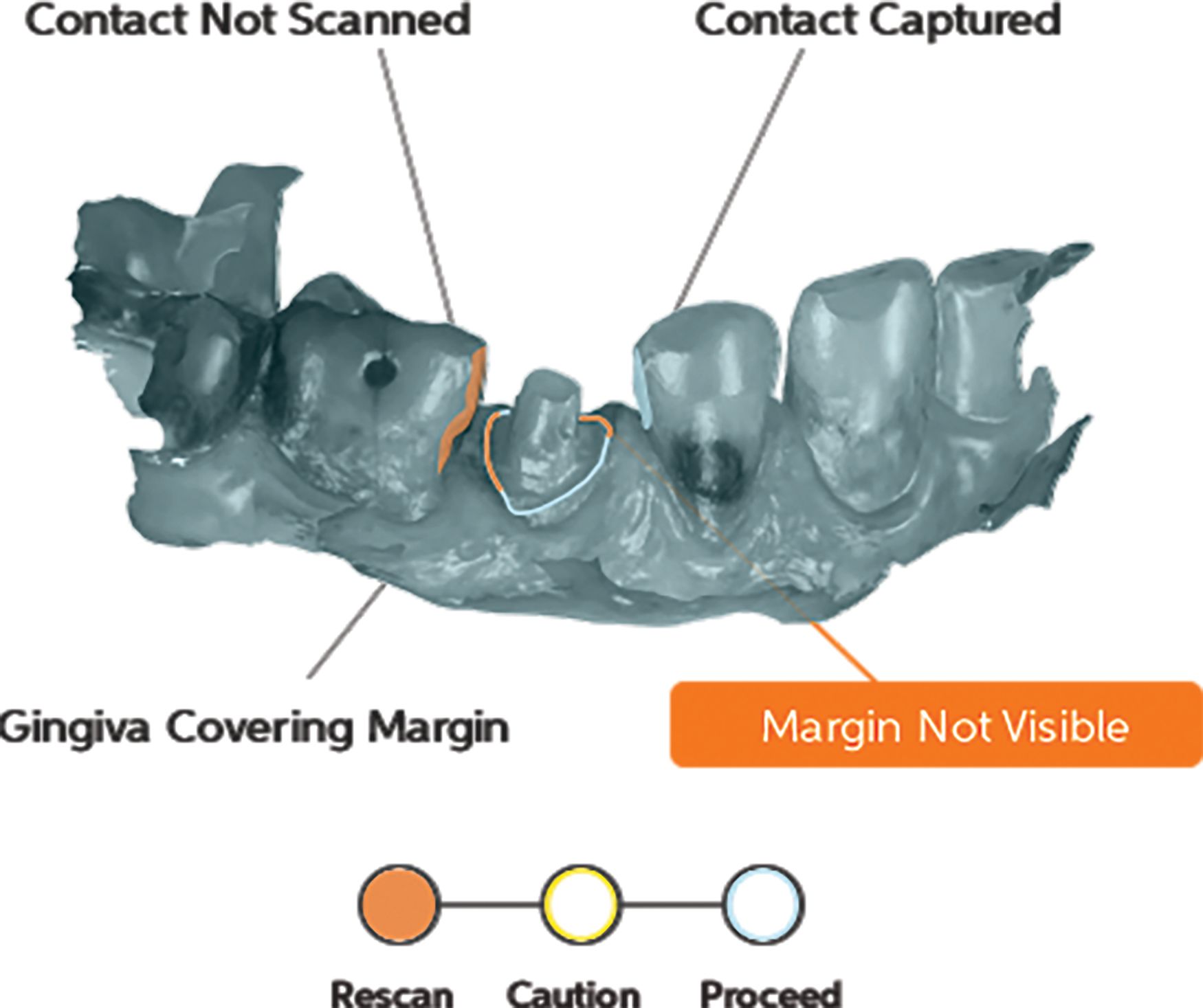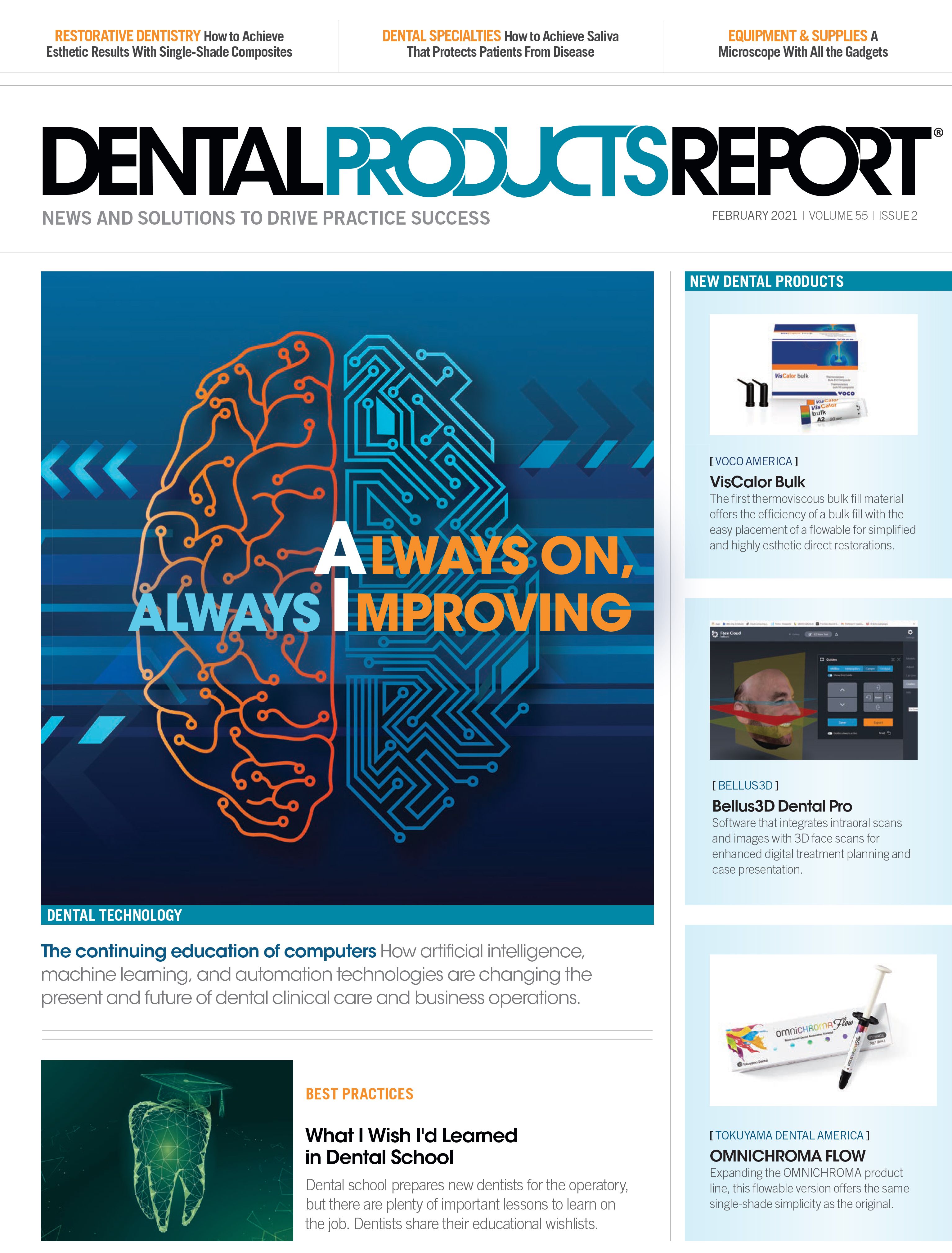Smarter and Smarter
Why artificial intelligence is the next big thing in dentistry.
pinkeyes / stock.adobe.com

I live and breathe tech. In the early days, when technology was just beginning to seep into our society, I built and configured my own computer network. I actually crawled above the ceiling tiles of my small office with an ethernet cable in my teeth, dragging it to the operatories and my personal office.
When it became fashionable to have a web page, I really wanted 1 (back then they were for personal stuff; there weren’t any business websites yet). However, even though I was willing to pay someone, I couldn’t find anyone who knew how to do it. So I went to my local Barnes & Noble (remember book stores?) and bought a book on how to program in Hypertext Markup Language (HTML). Over time, I actually wrote the code for my very first website…in a text editor.
My point in all this is not that I’m super smart, just dedicated. Back in the early days, if you wanted to put in the time, much of tech could be a DIY hobby project, and it became my hobby.Today…not so much. Heck, there are people graduating with college degrees in website design. My meager little effort in HTML programming is probably now considered so rudimentary that elementary school kids would find it overly basic.
Now things are so specialized that they can often be hard to comprehend. Our focus in this issue of Dental Products Report® is artificial intelligence (AI), and try as I might, I just cannot comprehend how this branch of technology manages to do what it does. That being said, I can tell you that it works and it is extraordinary.
The best example of what AI is all about is when you search your photos, whether on your phone or in the cloud. Even though I have an iPhone and Apple’s iCloud, I use other apps to back up and store my pictures. One of my favorites is Google Photos. You can set the app to back up every picture you take and send it to the cloud. It also can sort your photos using AI.
Here’s an example. In my family, I’m the one who loves to take pictures. The problem is that my wife loves her Android phone, and with the 2 different operating systems we both can’t share my iCloud account where my pictures are backed up. But, as I use Google Photos, I set up a folder that I share with my wife. I also set up the folder to use AI to identify family members by their faces.
Now whenever I take a photo with my phone, it is rapidly uploaded to Google Photos. There, the algorithms run over the photo, scouring it for family faces. When they find one, the photo is copied and placed into the shared folder…and it happens with every photo with no effort on my part.
One other quick example. On Halloween I saw a kid dressed up as a hotdog and I thought it was hysterical. One day, I went to show the picture to a friend, but couldn’t find it on my phone.Rather than scrolling through all the photos, I simply searched on hotdog, and every picture showing a hotdog quickly showed up. The weird thing was, there was one photo I had taken of Kansas City Royals Kauffman Stadium that also showed up. The photo was of the field itself and a small portion of the outfield seats, so I was stumped as to why it popped up in the search result. Later, I opened the picture on my computer and noticed that way in the background there was a food stand, and next to a large Pepsi logo there was, you guessed it, a tiny picture of a hotdog next to a cup of Pepsi. I was stunned. The image was so small, I would not have even noticed it if it were not for the AI. However, the AI had seen it, and I found that incredible.
Paying It Forward
Fascinating as I’m sure these stories are, what do they have to do with dentistry? Simply put, there is a technological “trickle down” when it comes to amazing new ways to apply things learned in other areas.
Just as NASA created nickel titanium, which then changed endodontics, the war on terror changed AI. The mobility of our world made it difficult to screen all the people entering the United States who were passing through customs and immigration. The idea was to have a photo database of known bad guys and compare those photos with people entering the country. This work, combined with the sudden proliferation of closed-circuit television cameras, led to some amazing captures and greater security at the border. Then the technology began to trickle down from government agencies to the rest of us.
For our profession, imagine a database not of bad guys but of “bad teeth,” which algorithms could access and compare. One of the biggest problems we have as diagnosticians is reading radiographs, partly because the systems that create the images render them in black and white. There are limitations because the human eye can perceive only 30 shades of gray. That doesn’t give us a lot to work with.
Using the latest innovations in artificial intelligence and over 10 years of expertise in computer vision, Pearl aims to usher in a new wave of AI-powered dentistry tools, including Scan Clarity Score to help dental labs evaluate digital impression quality.

Computers, however, can see 256 shades of gray and are much better than humans at differentiating very small nuances. They can look at an image and analyze each individual pixel, comparing it with all the other pixels around it, looking for differences.
This is one of the reasons digital radiography software has filters that the user can apply. Those filters enable doctors to remove degrees of gray or enhance the contrast to aid them in noticing where darker areas lie.
That is why AI has such a great future in health care. The hardware has the ability to sense things we cannot and the software has the ability to put it into context.
Imagine sitting down to review radiographs and they have already been “marked up” by software that essentially tells you, “Here are areas that look suspicious.” These AI systems already exist, and they become smarter with every use. Tell the software, “Positive caries here,” and it learns. Tell it, “Negative caries here,” and it learns. As you work with the software, its diagnostic accuracy grows.
Next, add in the ability to apply statistics and the power grows exponentially. Think of something, such as “Caries in this area of the furcation results in extraction 82% of the time.” Software engineers can enable systems to give you some type of statistical confidence for you to consider in decision-making and treatment planning.
Our profession relies on both experience and whatever data we can gather. The more data points we have to aid in our decision-making process, the better our decisions will be. Although critical decision-making will always rest with the doctor, I see a future in which machine learning will provide critical and objective data points. Whether pixels on a radiograph, suggested designs on CAD/CAM software, the planning of a clear aligner orthodontic case, or diagnostic aids that actually improve with experience—just like humans—await us. How incredible is that?

ACTIVA BioACTIVE Bulk Flow Marks Pulpdent’s First Major Product Release in 4 Years
December 12th 2024Next-generation bulk-fill dental restorative raises the standard of care for bulk-fill procedures by providing natural remineralization support, while also overcoming current bulk-fill limitations.